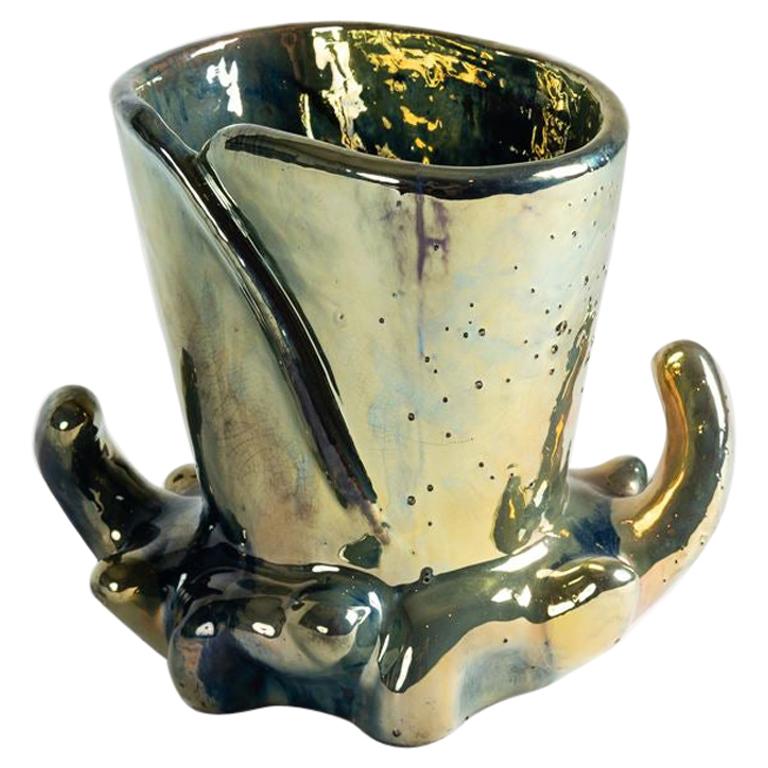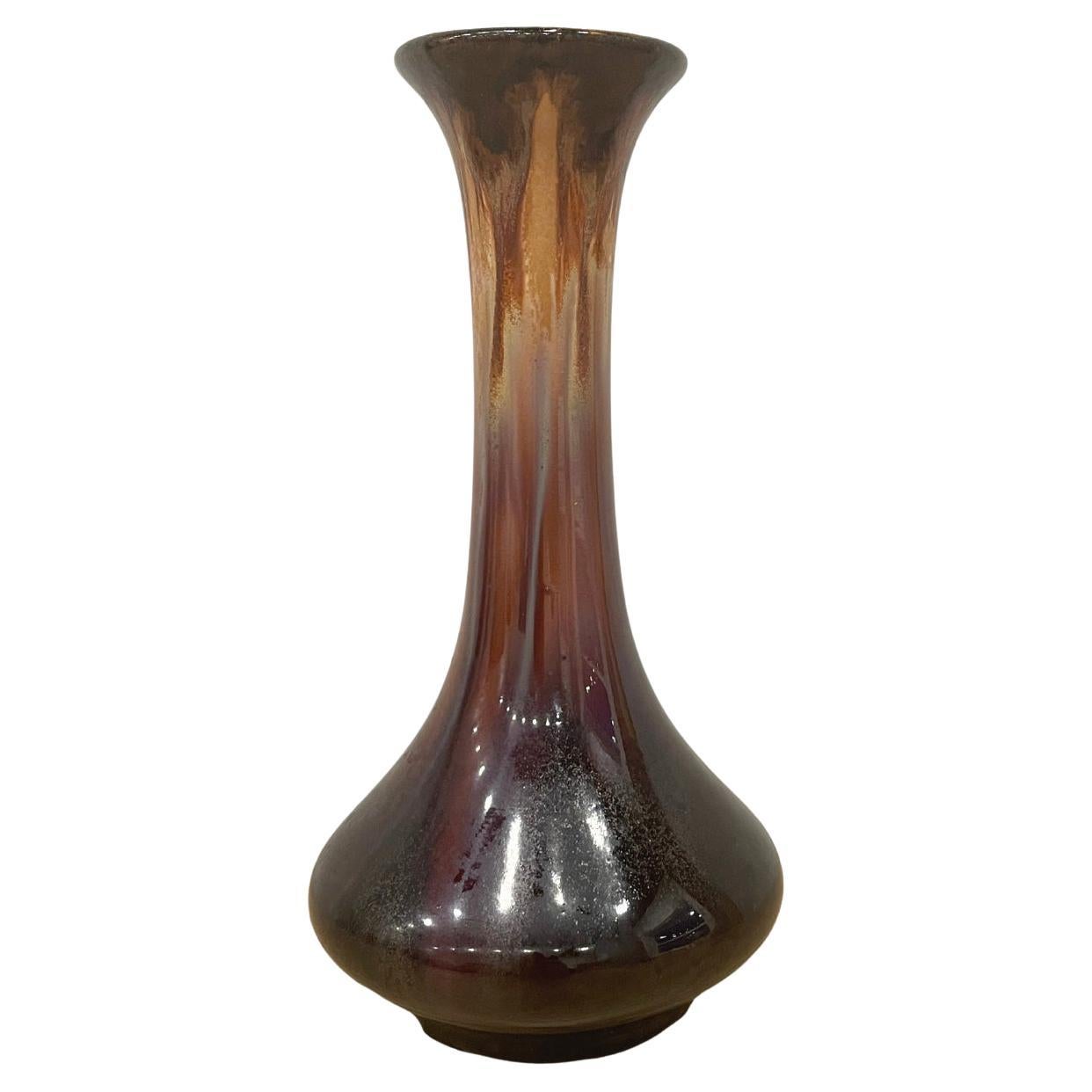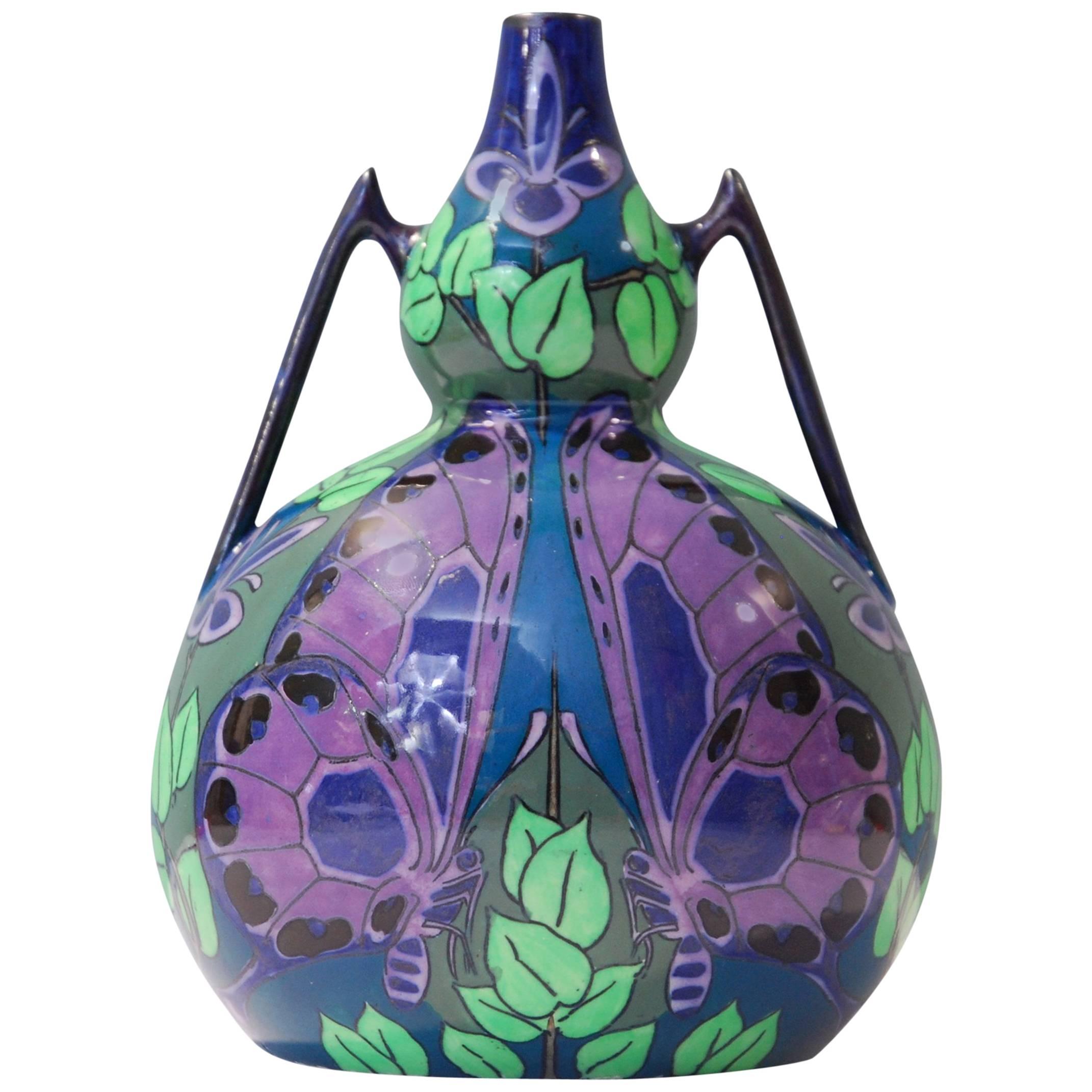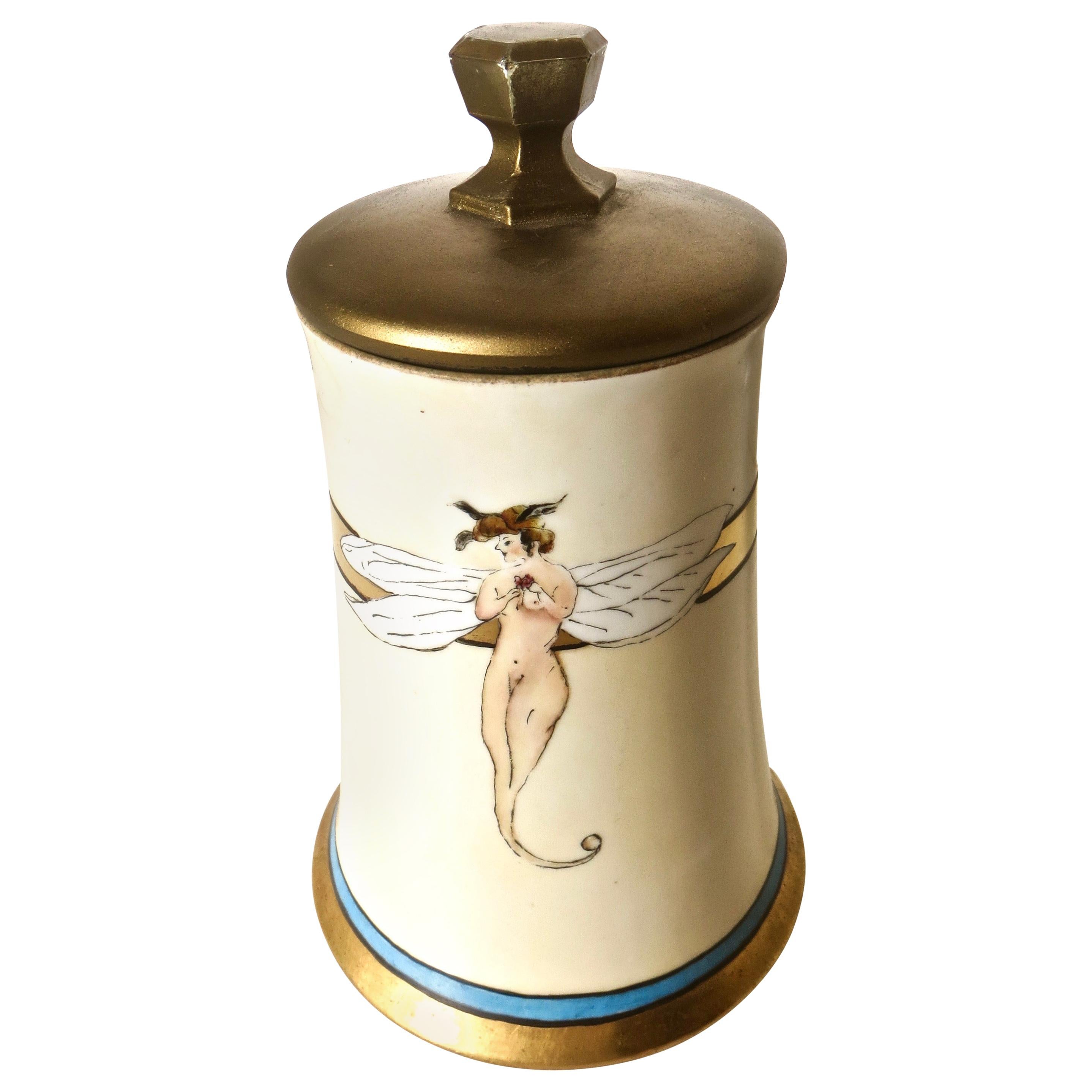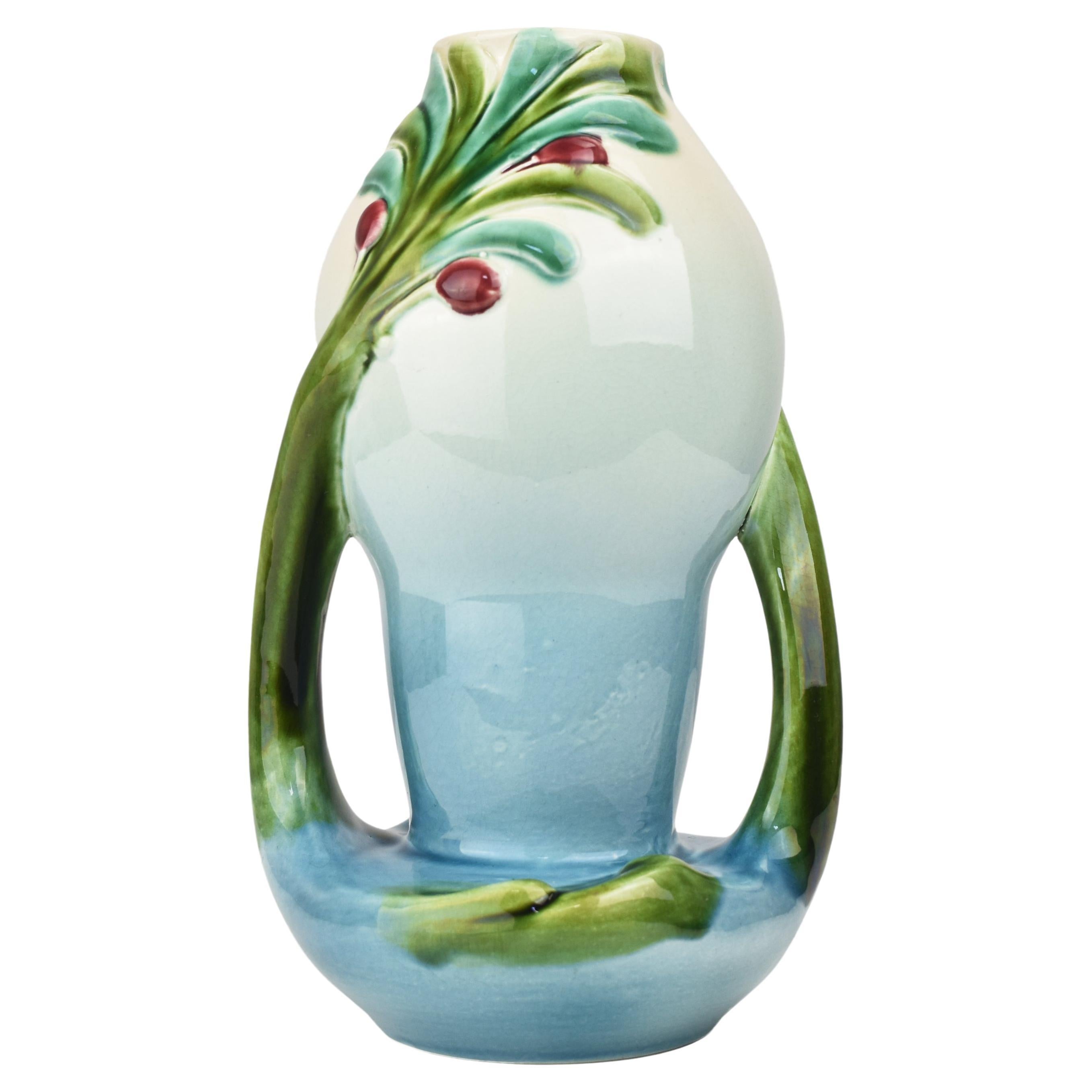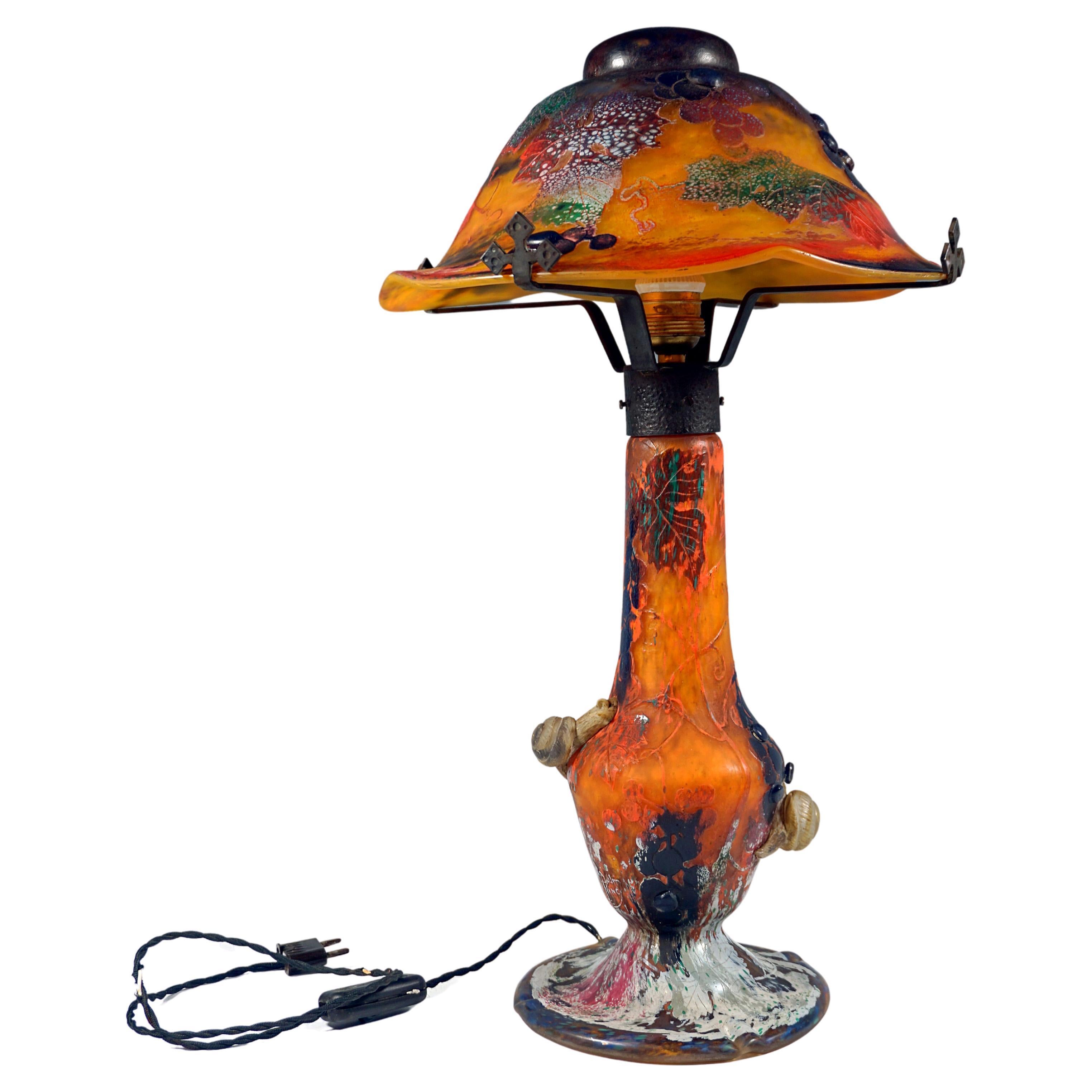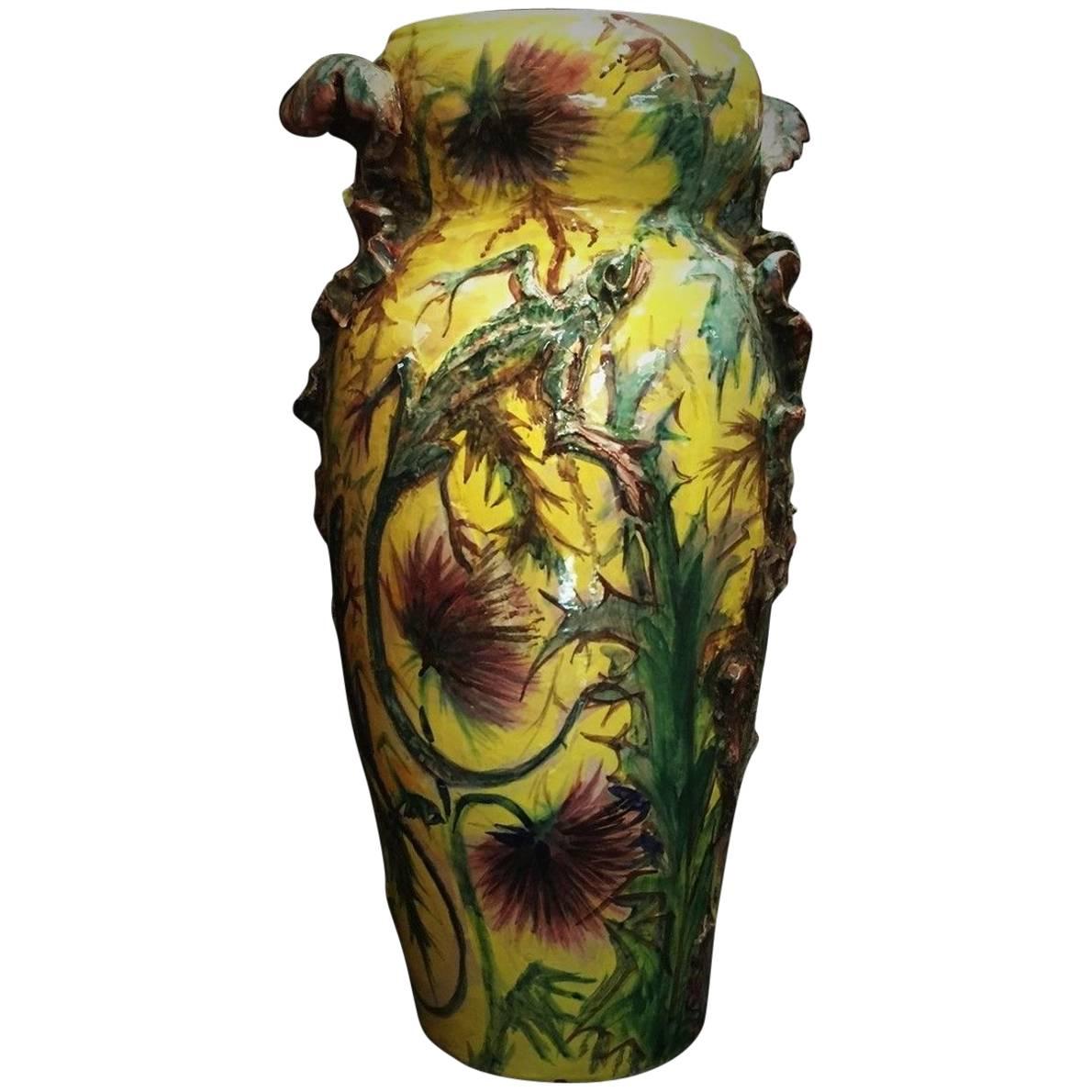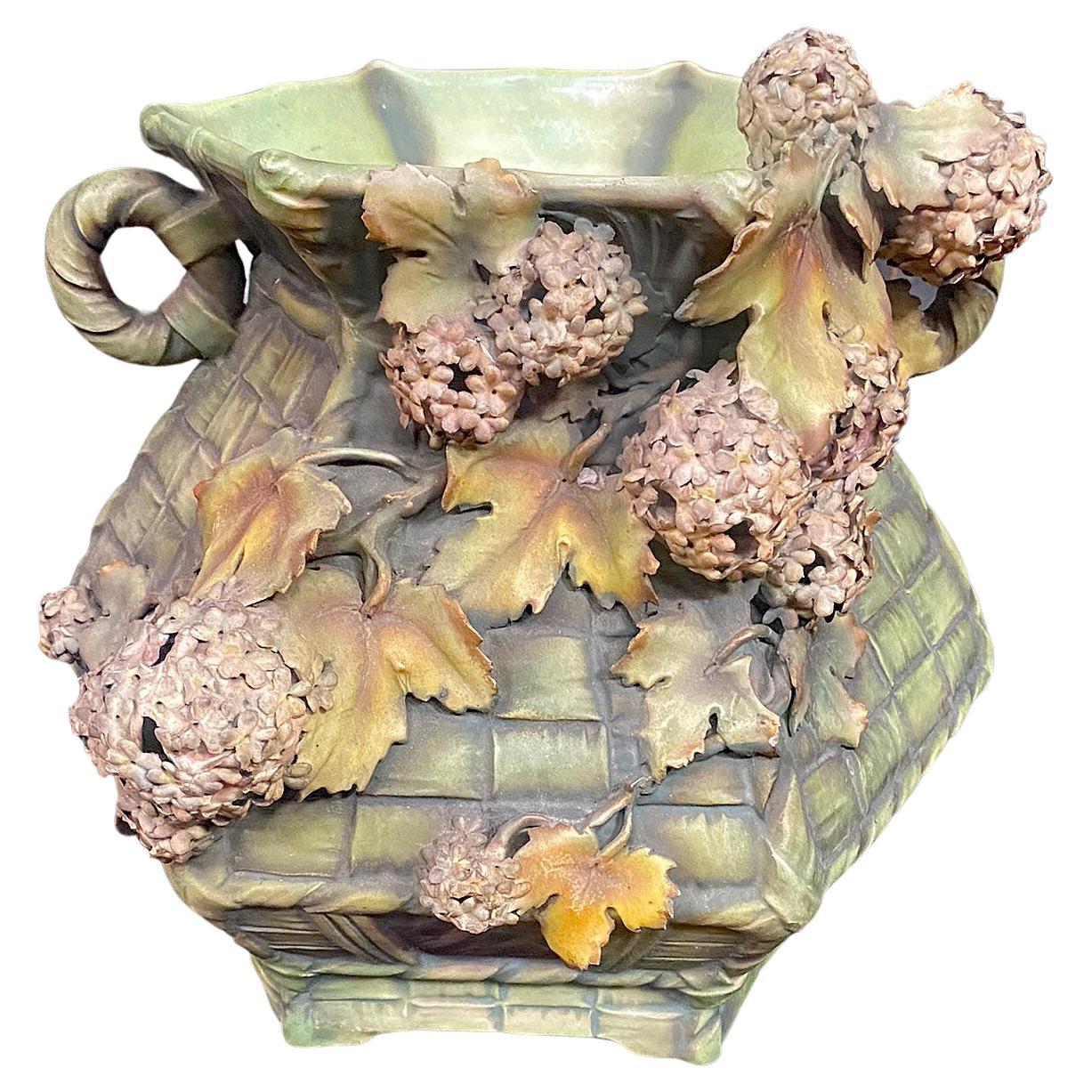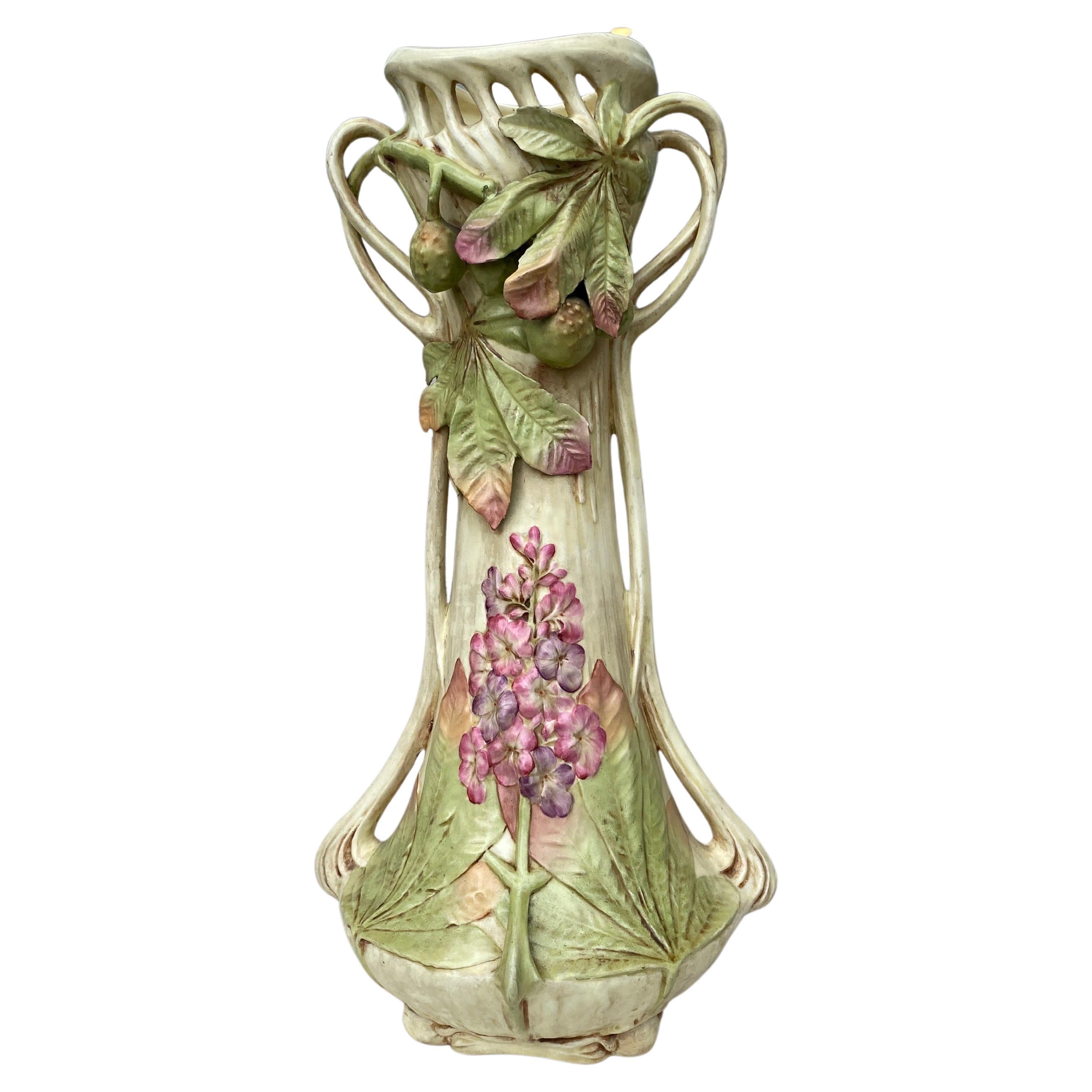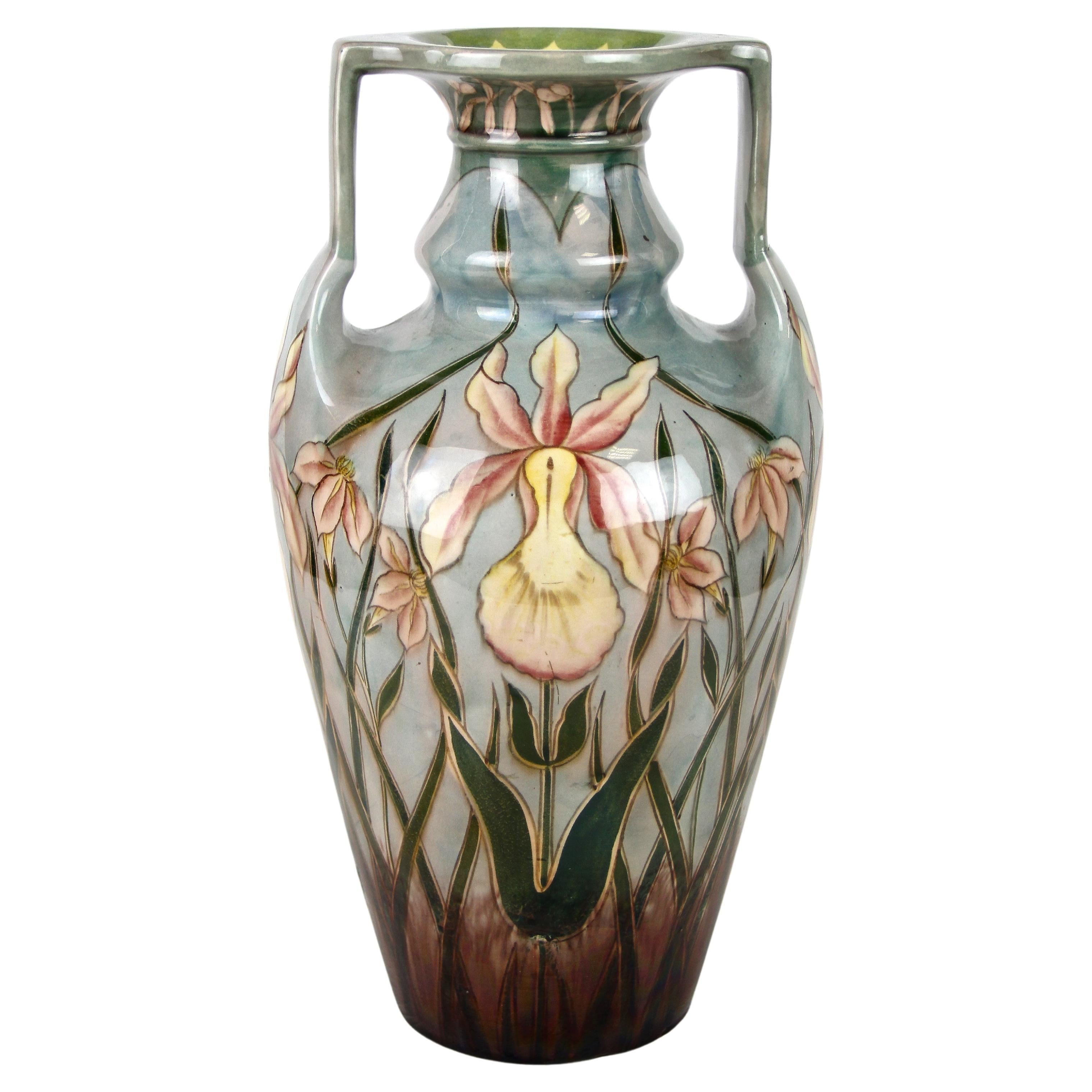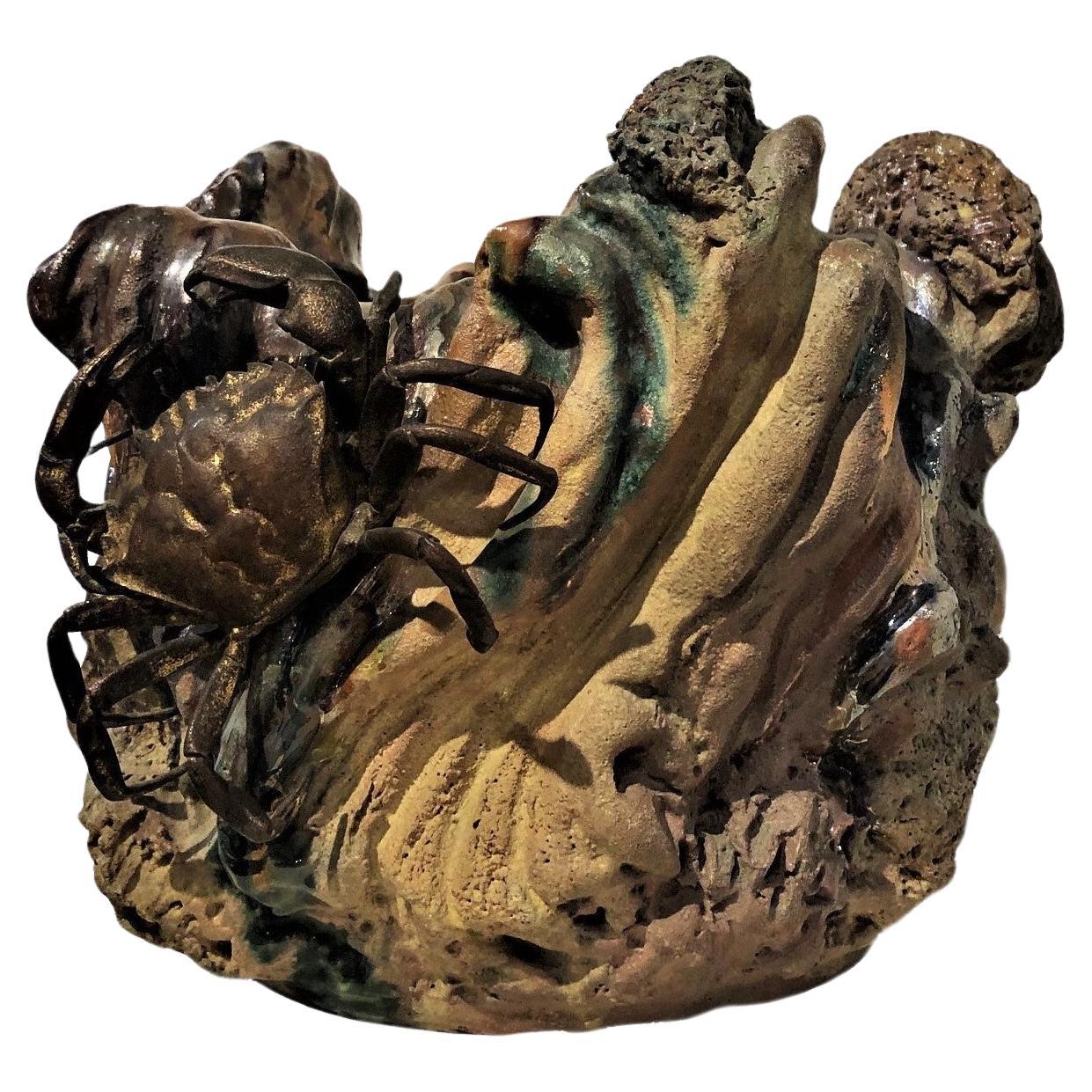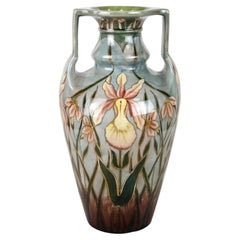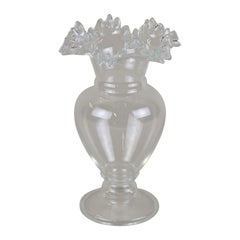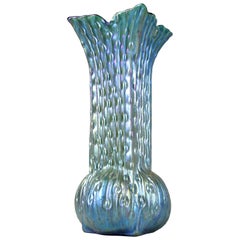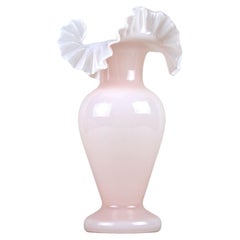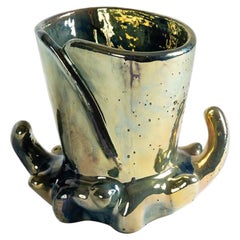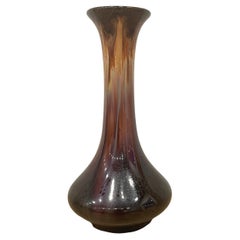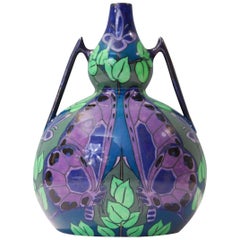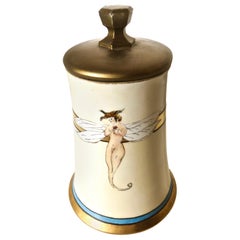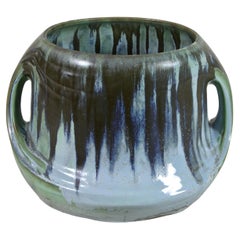
Art Nouveau Majolica Cachepot Drip Glazed, France, circa 1905
View Similar Items
Want more images or videos?
Request additional images or videos from the seller
1 of 18
Art Nouveau Majolica Cachepot Drip Glazed, France, circa 1905
About the Item
- Dimensions:Height: 9.4 in (23.88 cm)Diameter: 12 in (30.48 cm)
- Style:Art Nouveau (Of the Period)
- Materials and Techniques:Majolica,Glazed
- Place of Origin:
- Period:
- Date of Manufacture:circa 1905
- Condition:Wear consistent with age and use.
- Seller Location:Lichtenberg, AT
- Reference Number:Seller: AN-CP81stDibs: LU1553226764522
About the Seller
5.0
Platinum Seller
Premium sellers with a 4.7+ rating and 24-hour response times
Established in 2015
1stDibs seller since 2015
374 sales on 1stDibs
Authenticity Guarantee
In the unlikely event there’s an issue with an item’s authenticity, contact us within 1 year for a full refund. DetailsMoney-Back Guarantee
If your item is not as described, is damaged in transit, or does not arrive, contact us within 7 days for a full refund. Details24-Hour Cancellation
You have a 24-hour grace period in which to reconsider your purchase, with no questions asked.Vetted Professional Sellers
Our world-class sellers must adhere to strict standards for service and quality, maintaining the integrity of our listings.Price-Match Guarantee
If you find that a seller listed the same item for a lower price elsewhere, we’ll match it.Trusted Global Delivery
Our best-in-class carrier network provides specialized shipping options worldwide, including custom delivery.More From This Seller
View AllArt Nouveau Majolica Vase by Gerbing & Stephan, Bohemia circa 1910
Located in Lichtenberg, AT
Remarkable rare Art Nouveau Majolica vase by Gerbing & Stephan from the early period in Bohemia around 1910. The beautiful shaped grey blue c...
Category
Early 20th Century Czech Art Nouveau Vases
Materials
Majolica
20th Century Art Nouveau Frilly Glass Vase, Austria, circa 1910
Located in Lichtenberg, AT
Extraordinary glass vase with frilly edge coming from the famous Art Nouveau period in Austria around 1900. The mouthblown clear glass body impresses with a beautiful bulby design. A great highlight on this Art Nouveau vase is the amazing looking, lovely frilly glass...
Category
Early 20th Century Austrian Art Nouveau Vases
Materials
Blown Glass
Iriscident Art Nouveau Glass Vase by Loetz Witwe, Bohemia, circa 1902
By Johann Lötz Witwe
Located in Lichtenberg, AT
Exceptional Art Nouveau glass vase by Loetz Witwe Klostermuehle, Bohemia, circa 1902. This absolute rare, iriscident Loetz vase shows an unusual shaped body with a beautiful green gl...
Category
Early 20th Century Czech Art Nouveau Glass
Materials
Blown Glass
20th Century Art Nouveau Pink Frilly Edged Glass Vase, Austria circa 1900
Located in Lichtenberg, AT
Lovely, early 20th century glass vase with frilly edge coming from the famous Art Nouveau period in Austria around 1900. The mouthblown light pink flashed...
Category
Early 20th Century Austrian Art Nouveau Vases
Materials
Blown Glass
Loetz Witwe Art Nouveau Glass Vase Decor Cobalt Papillon, Bohemia, circa 1903
By Johann Lötz Witwe
Located in Lichtenberg, AT
Very decorative Loetz Witwe glass vase in decoration Cobalt Papillon from the Art Nouveau period in Bohemia, circa 1903. This gorgeous vase from the workshops in Klostermuehle shows ...
Category
Early 20th Century Czech Art Nouveau Vases
Materials
Blown Glass
Fritz Heckert "Jack In The Pulpit" Glass Vase Art Nouveau, Bohemia, circa 1901
By Fritz Heckert
Located in Lichtenberg, AT
Rare example of a large red "Jack In The Pulpit" glass vase from Fritz Heckert around 1901. This unique piece of Art Nouveau glass art convinces with its beautiful shaped body and u...
Category
Early 20th Century Czech Art Nouveau Glass
Materials
Blown Glass
You May Also Like
Grès de Rambervillers, Art Nouveau Glazed Ceramic Vase, France, circa 1905
Located in New York, NY
Stamped: GRE`S DE RAMBERVILLERS
Rambervillers is a city in Alsace-Lorraine, in eastern France, where in the late 19th century Alphonse Cyte're esta...
Category
Antique Early 1900s French Art Nouveau Ceramics
Materials
Ceramic
Art Nouveau Drip Glazed Ceramic Bud Vase
By Faience Manufacturing Company
Located in Los Angeles, CA
Antique drip glazed ceramic bud vase in rich earth tones. A classic example of Art Nouveau earthenware. Controlled drip has a lovely ombre effect that graduates from mohagany, to pale peach, and into aubergine with a dark finish at the bottom.
Attributed to Faiencerie Thulin...
Category
Early 20th Century Belgian Art Nouveau Vases
Materials
Ceramic, Faience
Art Nouveau Gourd Vase, Wedgwood, circa 1905
By Wedgwood
Located in Melbourne, Victoria
A rare example of Wedgwood’s excursion into Art Nouveau, in the form of a gourd shaped vase decorated with butterflies, designed by Courtney Lindsay in 1901.
Exhibited: Wedgwood, Ma...
Category
Early 20th Century English Art Nouveau Pottery
Materials
Earthenware
Art Nouveau Nude Decorated Lidded Porcelain Jar, Limoges, French, Circa 1905
By Limoges
Located in Incline Village, NV
Uniquely decorated porcelain Limoges jar with a wide winged span nude woman and a duck flying out of her hair, perhaps beckoning her to join in the flight. Her legs and feet end as one "a la mermaid". She is quite beautiful and is holding a bouquet of flowers in front of her. The same image appears on the other side. She is hand painted with brown hair, skin tones, with white and black detail to the "butterfly like" double wings. The duck is painted brown and black. Two gold leaf bands circumvents the vessel at the bottom and two thirds up. A blue band above the gold band at the base completes the hand painted decoration of the exterior. The interior of the jar is painted a light colored lime green. The underneath is clearly marked "P L Limoges...
Category
Antique Early 1900s French Art Nouveau Jars
Materials
Porcelain
Art Nouveau Majolica Vase by Sarreguemines, France
By Sarreguemines
Located in Bad Säckingen, DE
This antique Art Nouveau double-handled majolica ceramic vase features a beautifully embossed floral motif and was made by the famous French manu...
Category
Antique Early 1900s French Art Nouveau Vases
Materials
Ceramic
$638 Sale Price
20% Off
Art Nouveau Table Lamp 'Vignes Et Escargots', Daum Nancy, France, Circa 1905
By Daum
Located in Vienna, AT
A museum piece of French Art Nouveau glass art:
Lamp with baluster-shaped foot on a stepped, flat, round stand raised in the centre, hemispherical shade, slightly heat-stretched and pressed upwards on four sides, made of multi-layered glass with coloured powder fusions, predominantly in yellow-orange, red, brown, green and blue-violet tones, with highly etched vine leaves and grapevine decoration, two fully sculpted snails on the foot as a special accent, Cameo signature ‘DAUM NANCY’ with Lorraine cross on the foot in the lower area, and on the shade, which rests on a patinated metal mount, which also carries the threads for the light sources, one at the top and one inside the foot.
Technique: Handmade cameo glass
Glass overlaid with several layers, with high-cut worked out motifs. Since the middle of the 19th century, the design has also been done by etching. Cameo glass vessels were already being made in antiquity; cameo glass vessels were already being made in ancient times, and at the end of the 19th century this glass art was further developed,
especially in Nancy.
Manufactory: Daum Frères / Nancy, Lorraine, France
Dating: Circa 1905
Dimensions:
Height: 53,5 cm / 21.06 in
Diameter: 32,0 cm / 12.59 in
Bibliography:
Carolus Hartmann, Glasmarken-Lexikon / Encyclopedia of Glass Marks, Stuttgart / Germany 1997, Signature number 2984 on page 148, and page 561: Daum Frères & Cie, Verreries de Nancy
Condition: Very good
The electrification is functional, but should be renewed for safety reasons.
About the design:
The development of Art Nouveau glass art coincides with a revolution in lighting, the significance of which we can no longer fully appreciate today in the 21st century. Around 1880-1890, oil lamps and paraffin lamps were still almost unrivalled in every household. It was not until the beginning of the 20th century that the ‘electricity fairy’ emerged as a remarkable advance and gradually found its way into the daily lives of all social classes. The glassmakers at the Ecole de Nancy were true pioneers and eagerly seized the opportunity to use electricity to illuminate the colours
applied to the glass. Colour was one of the main concerns of the master glassmakers at the Ecole de Nancy.
Emile and Antonin Daum returned to the colours that had made the stained glass of the Middle Ages so splendid and extended the palette of colours in the glass mass as they needed it for the floral motifs and exact representations of nature. But the modulation of the colours, their arrangement in juxtaposed patches, the technique that the Impressionist painters practised on their canvases at the same time, was difficult to achieve due
to the nature of the glass melted in a large mass.
To achieve this richness of expression, around 1900 Daum developed ‘the process of applying glass powder and enamel to the outside of the vases to create coloured backgrounds or decorative spots’, according to the report of the jury of the 1900 World Exhibition.
The field of naturalistic, contrasting and shimmering colours was one in which Antonin Daum excelled. This new technical process made it possible to create the symphonies of colour that we find on the ‘Vignes et escargots’ lamp...
Category
Antique Early 1900s French Art Nouveau Glass
Materials
Glass
